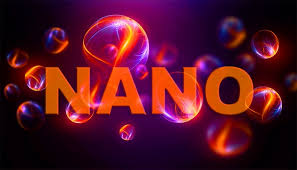Change in reactivity and chemical properties of nanomaterials (PhD in nano-microelectronics)
Researcher and author: Dr. ( Afshin Rashid)
Note: The chemical properties of a nanomaterial are properties that cannot be measured independently. This means that the amount of a chemical quantity is determined during the reaction and interaction of a nanomaterial with other materials.
The reactivity or tendency of a nanomaterial to react with other materials is one of the most important chemical properties of nanomaterials. You must have seen the scene of the ignition of sodium, lithium or potassium in contact with water. These are all elements that are highly reactive. As much as they can not be kept in contact with air like other elements. On the other hand, dropping a gold ring in a glass of water does not happen, or aluminum windows are used in the presence of air without any problems (of course, this is due to the oxide-resistant layer that forms on the surface of aluminum (but the same materials in scale The nanometers behave differently.
The reactivity of nanomaterials at the nanometer scale increases dramatically. At this scale, gold and graphene nanoparticles are not only highly reactive, but are also used as catalysts to increase the reaction rate of other materials. Aluminum nanoparticles ignite in air and can be used as rocket fuel. The reactivity of the materials at this scale has made it possible to make much stronger catalysts, so much so that many irreversible reactions (such as the formation of toxic gases NO and CO) at ambient temperature and pressure can be expected using nanocatalysts. Accepted. What has been said is just a few examples of the changing properties of a material at the nanoscale. Melting point, thermal properties, tempeThe electrical principle, mechanical properties, and dozens of other known physical and chemical properties also change at this scale. It seems that it is no longer possible to identify a substance without considering its particle size. To solve this problem, some have suggested adding another dimension to Mendeleev's table. This means that in order to determine the properties of an element, in addition to having to specify the name of that element and its position in the Mendeleev table, it is necessary to determine in what dimensions the properties of the element are desired.
Conclusion :
The chemical properties of a nanomaterial are properties that cannot be measured independently. This means that the amount of a chemical quantity is determined during the reaction and interaction of a substance with other substances.
Researcher and author: Dr. ( Afshin Rashid)
PhD in Nano-Microelectronics




